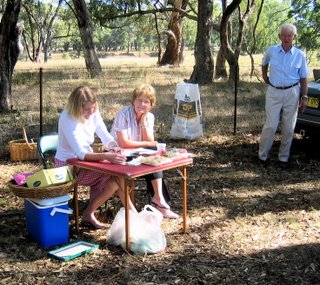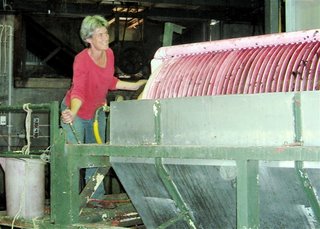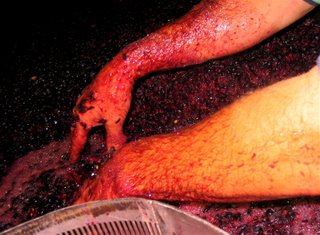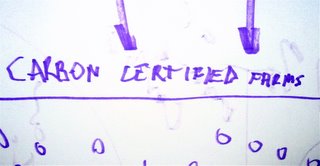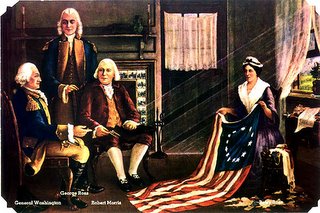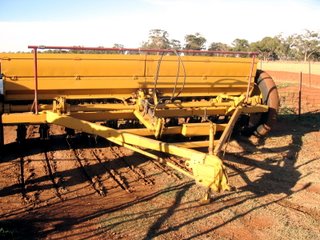
Louisa and I travelled to Narromine, about 150kms northwest of Goolma, to visiit Bruce Maynard at his property "Willydah". We were there to see Bruce's innovative farm in action and to talk about his stress free stock handling program (blogged last month). It is the neatest farm I have ever seen. Beautiful lines of saltbush, wide laneways, all the trailers parked in a neat line... I could blog on and on. One of Bruce's many contributions to carbon farming (soil management techniques that increase rootmass under plants to form a rich, living environment deep under the surface) is called "Advanced Sowing". Instead of ploughing the red soils and exposing them to wind and rain erosion, while betting on a rain even to germinate the seed each year, Bruce 'direct drills' seed into dry soil that is covered by pasture or 'trash' (stubble or leftovers from previous crops). The aim is to keep the soil covered and the rootmass alive under the soil.
 The seed then germinates if and when it rains or when there is enough ground moisture. The weeds aren't given a head start by baring the earth (so there's no need to spray toxic chemicals) and Bruce continues to cell graze the plots to encourage the growing crop to compete with the weeds.
The seed then germinates if and when it rains or when there is enough ground moisture. The weeds aren't given a head start by baring the earth (so there's no need to spray toxic chemicals) and Bruce continues to cell graze the plots to encourage the growing crop to compete with the weeds.In 1995 he converted an old MF500 series combine by attaching "Acraplant units" to it. These discs cut a 1cm slot through the pasture without disturbing the soil or damaging the plants. A 1960s LandCruiser pulls the unit becuase there is so little resistance to the rolling discs. The Maynard family plants 100 hectares of oats and 400 hectares of forage sorgum annually, which can be stripped or grazed by the cattle. Lucerne and clover have also be sown into pastures using this method.
The financial risk is small, the working day is short, and costs are low. Total costs are calculated at $15.60/haa. If b eef is returning $1/kg, they need 15.6kg of beef/ha/year to cover the costs... Amazing.
 Now they haven't had real rain out that way for 5 years, but we had a fall last night and Bruce had just finsihed sowing when we were there earlier in the week. Let's hope he got enough to get the crop to strike.
Now they haven't had real rain out that way for 5 years, but we had a fall last night and Bruce had just finsihed sowing when we were there earlier in the week. Let's hope he got enough to get the crop to strike.(By the way, soils with cover retain moisture better and lose less to evaporation.)






